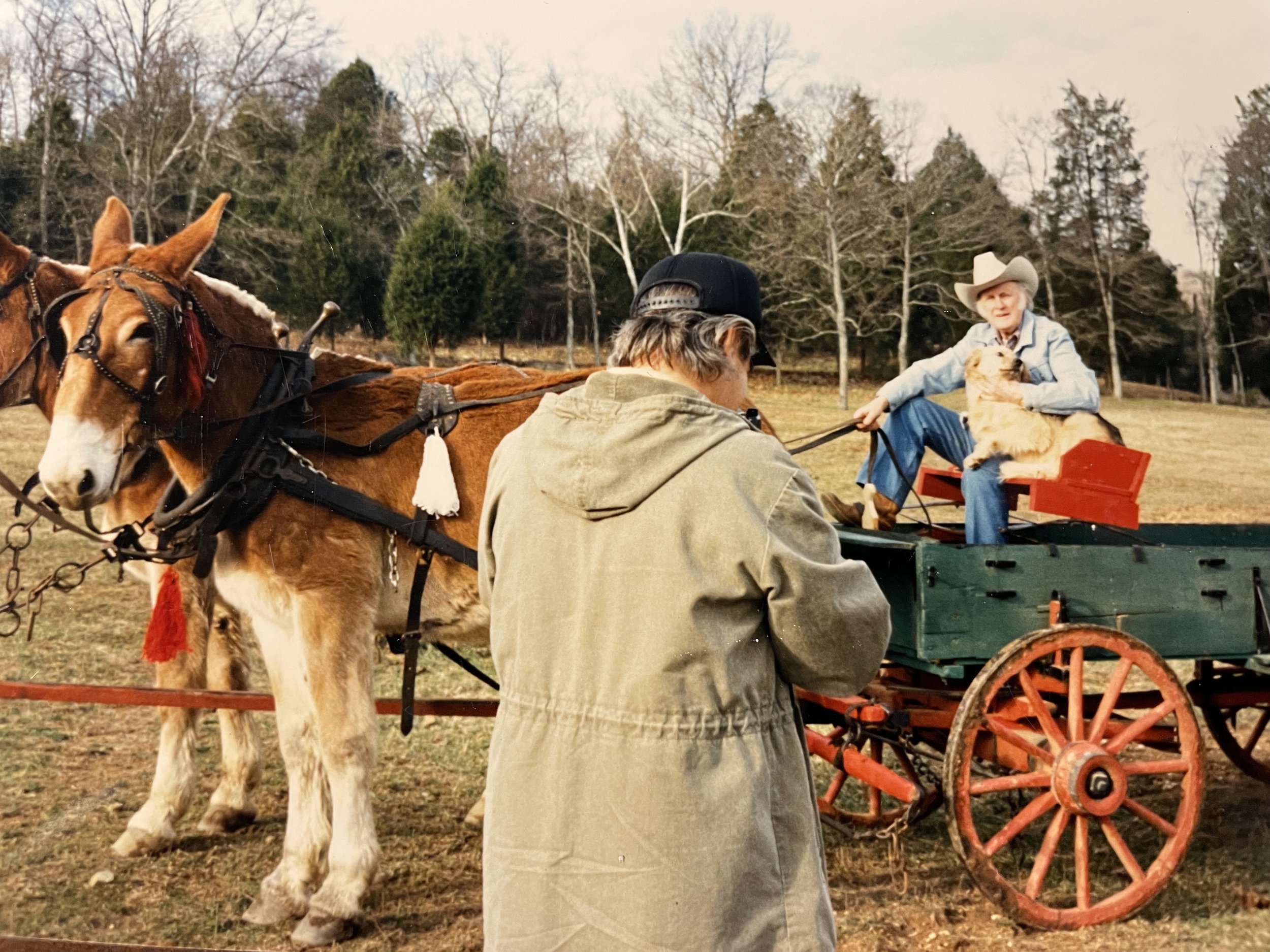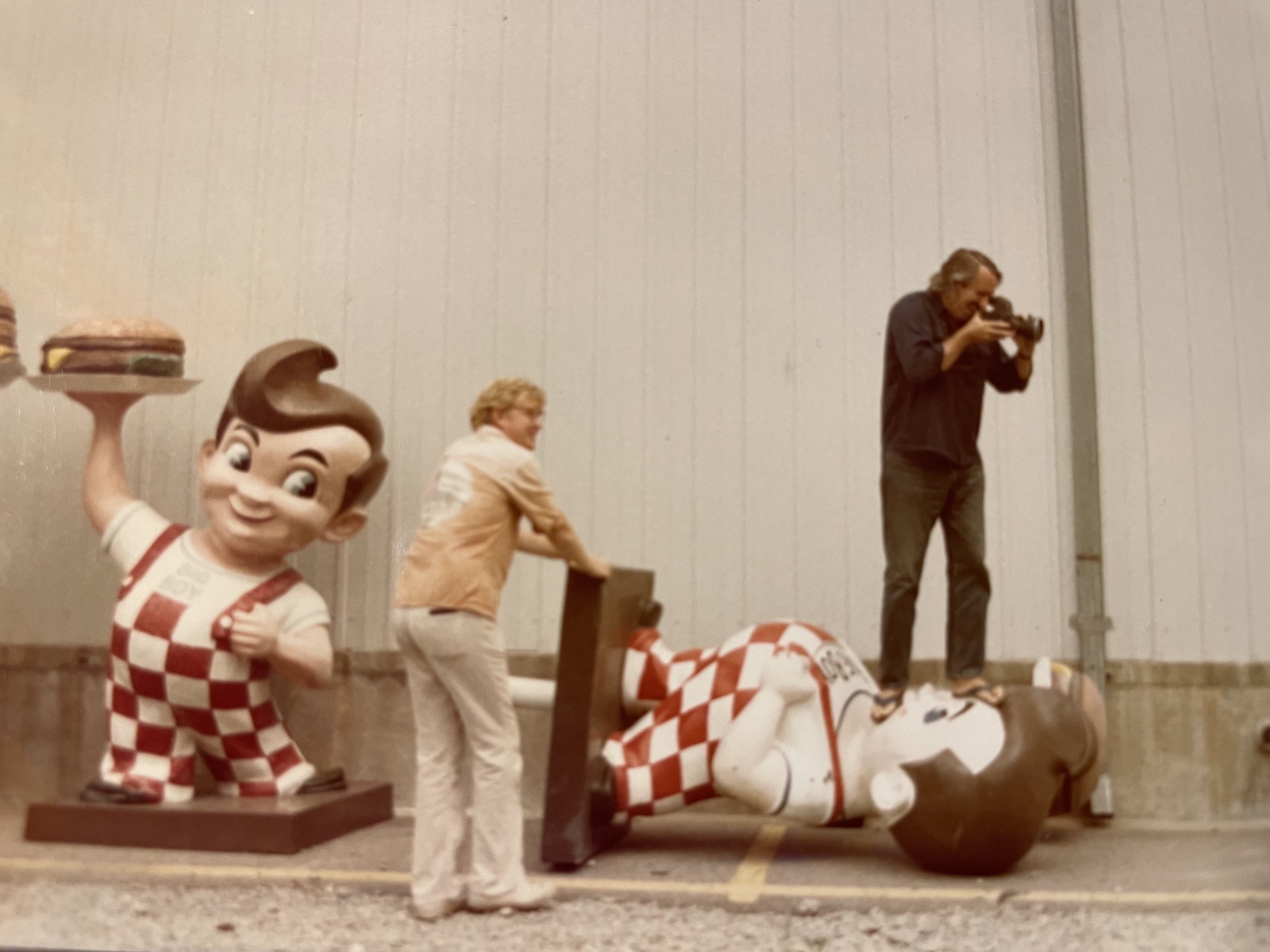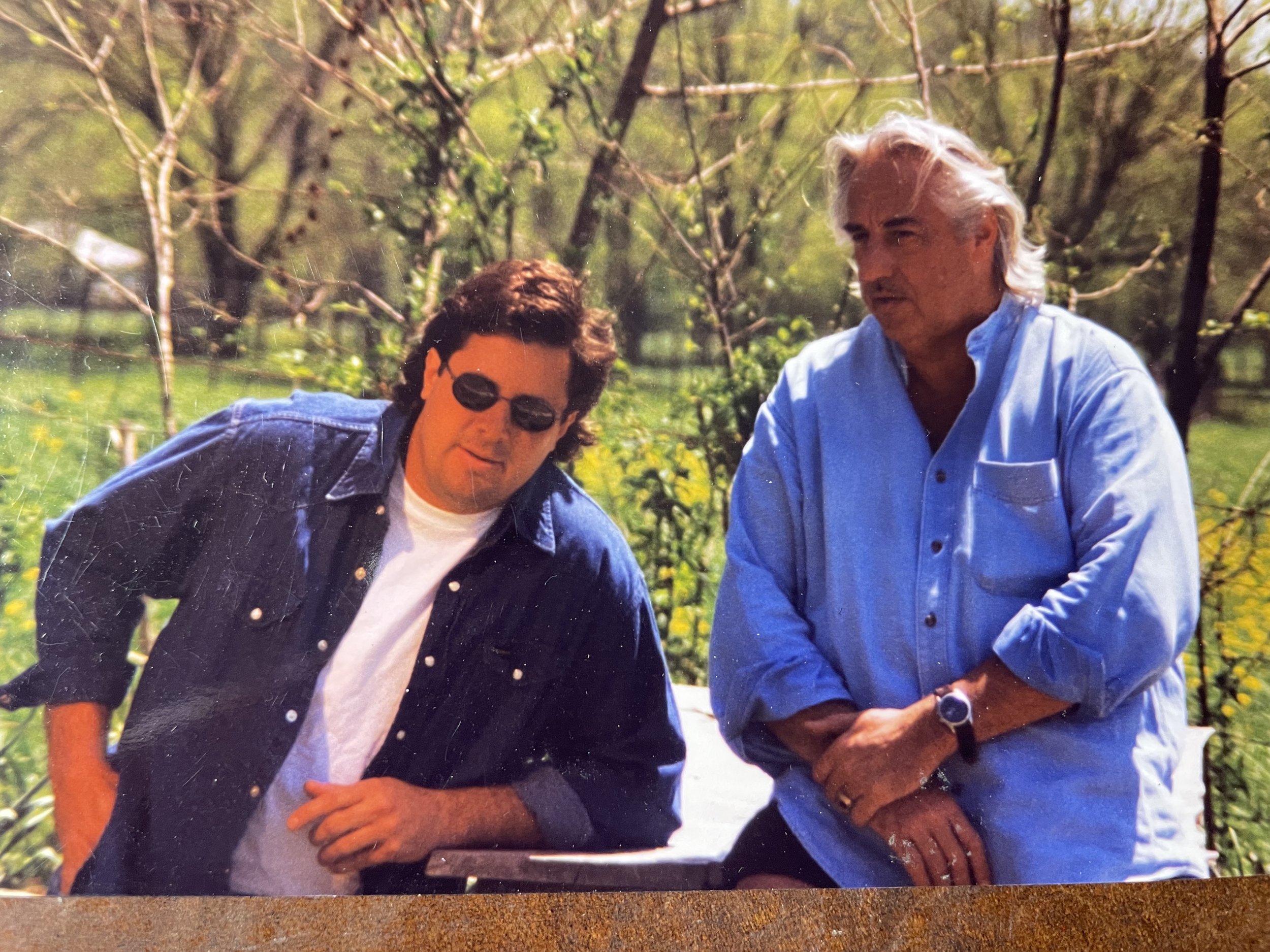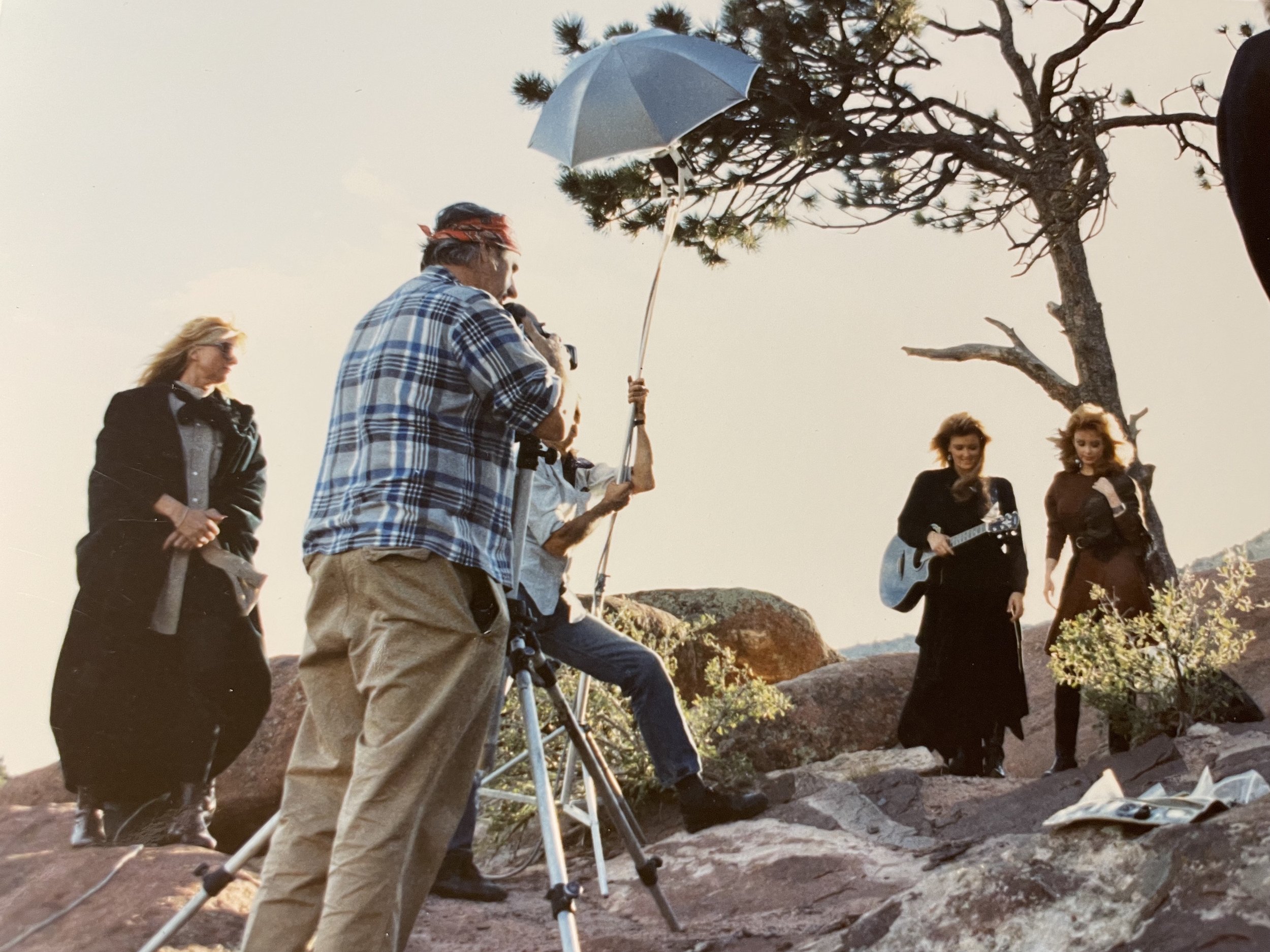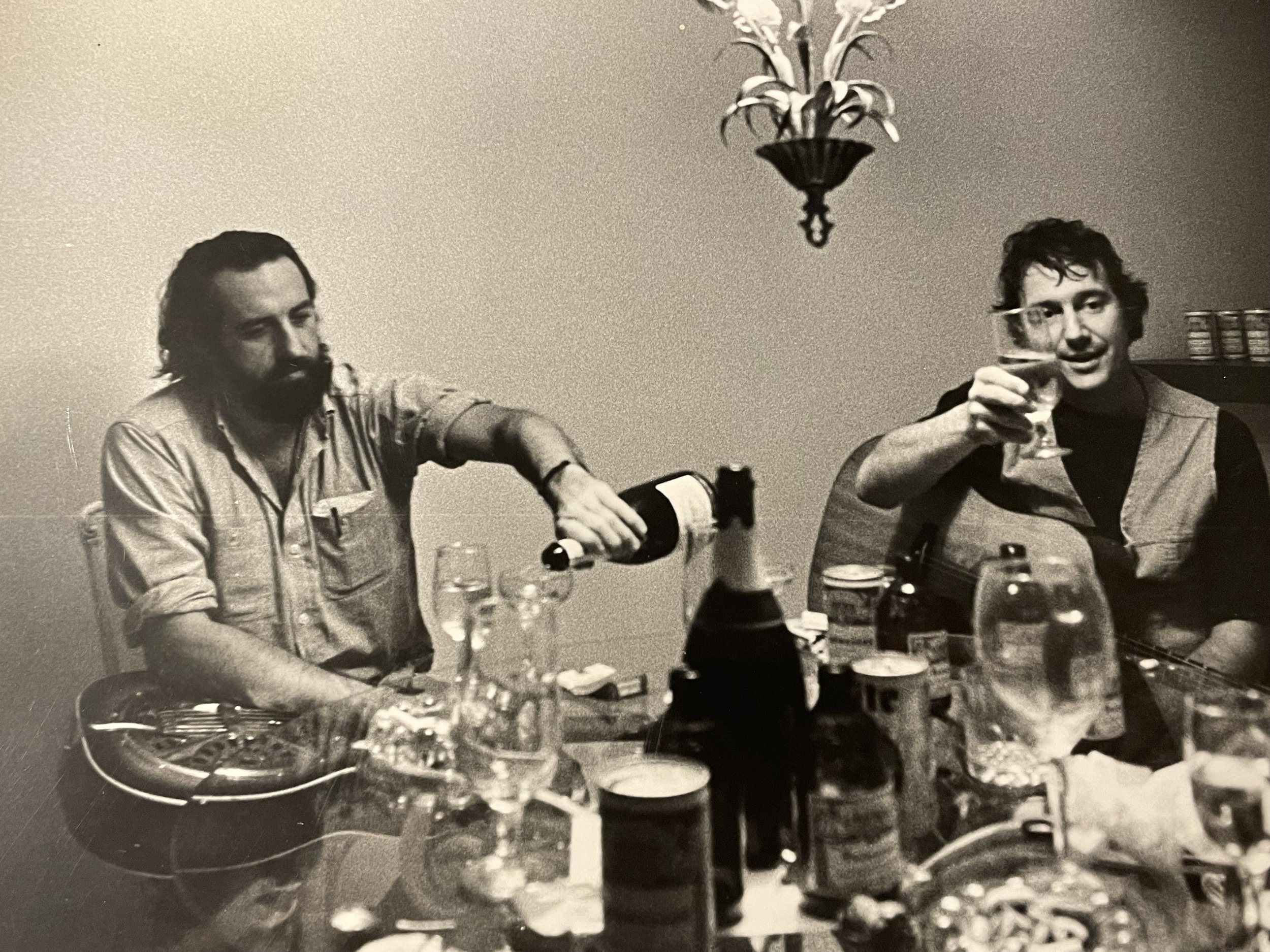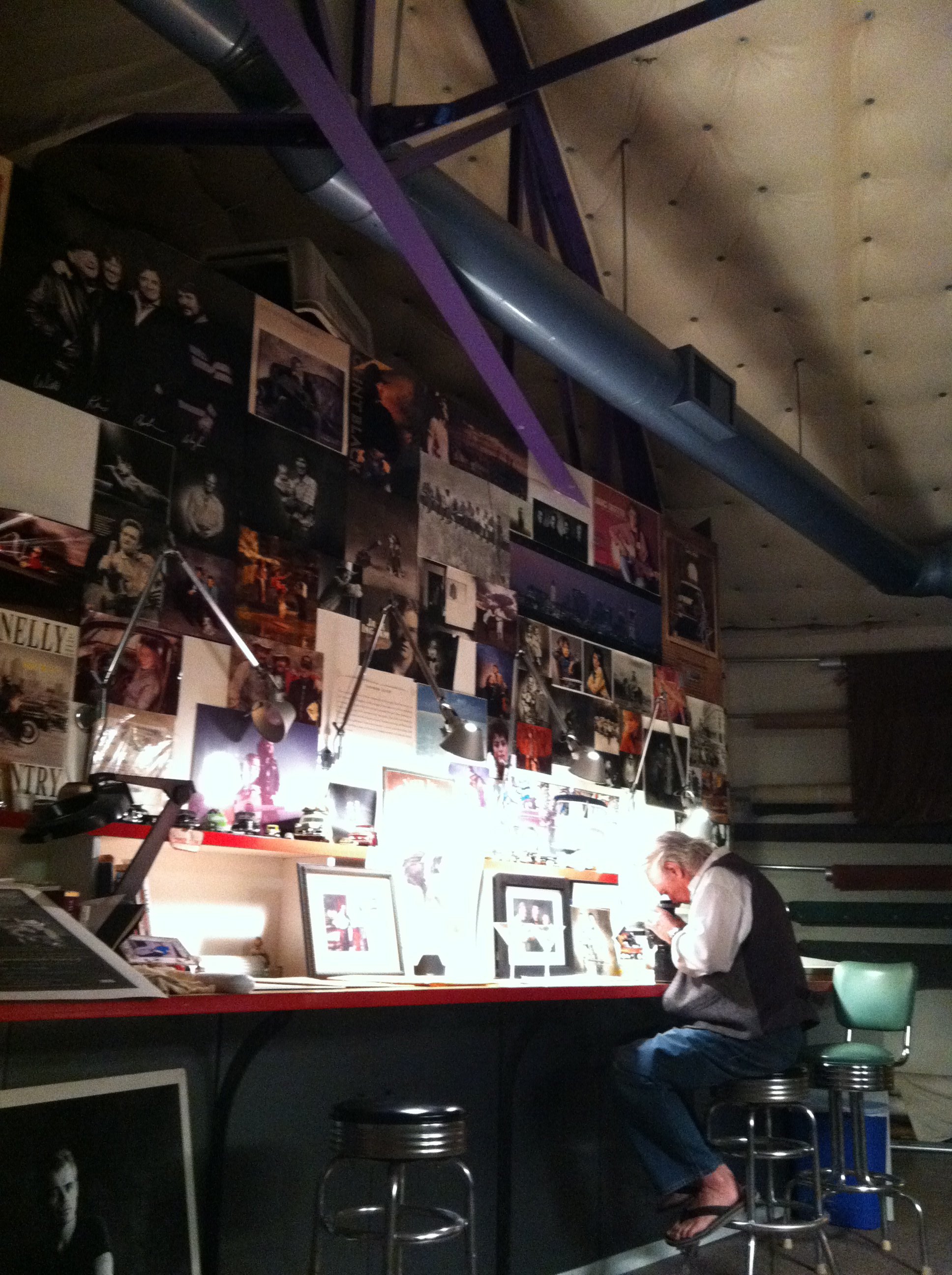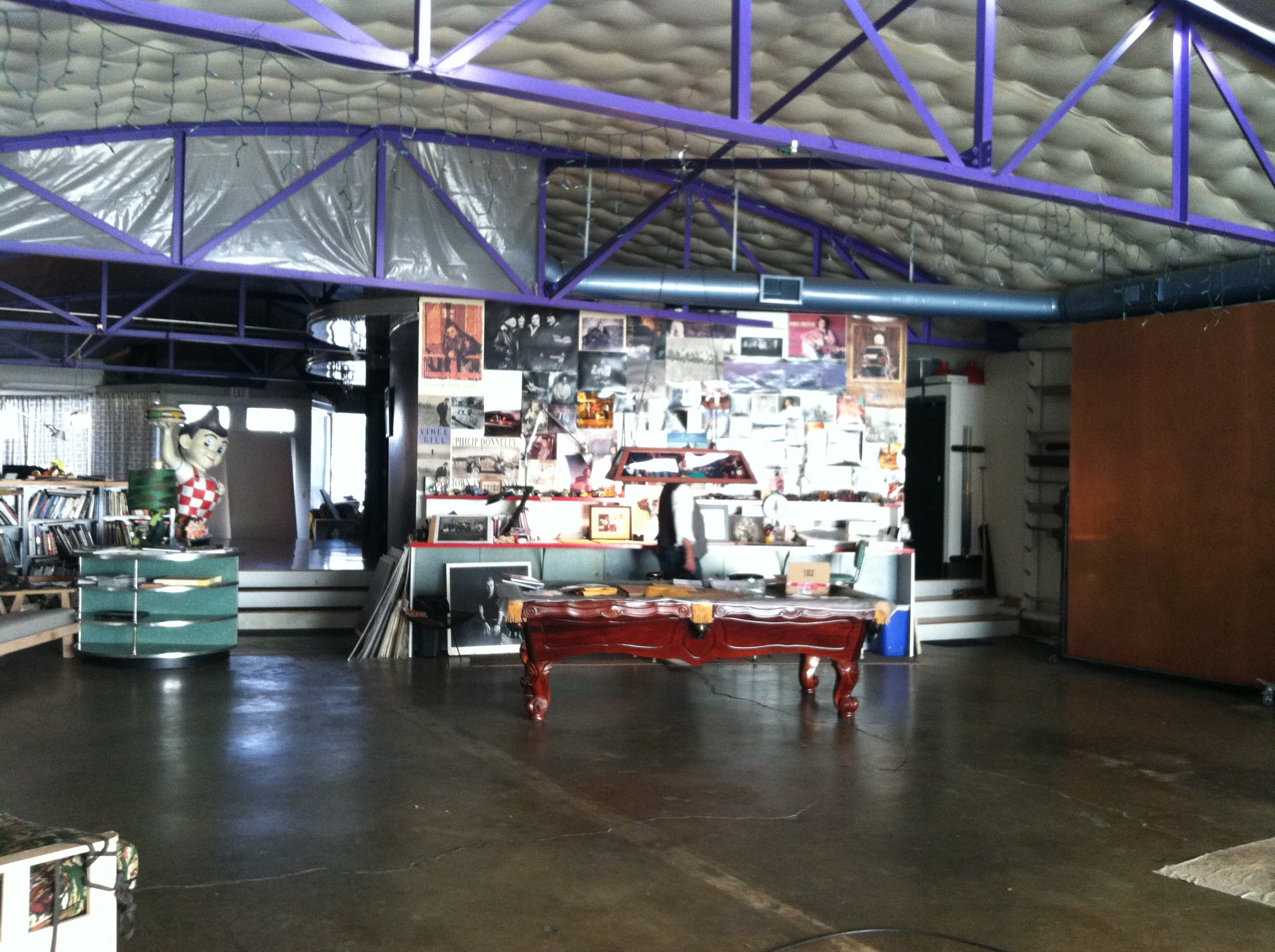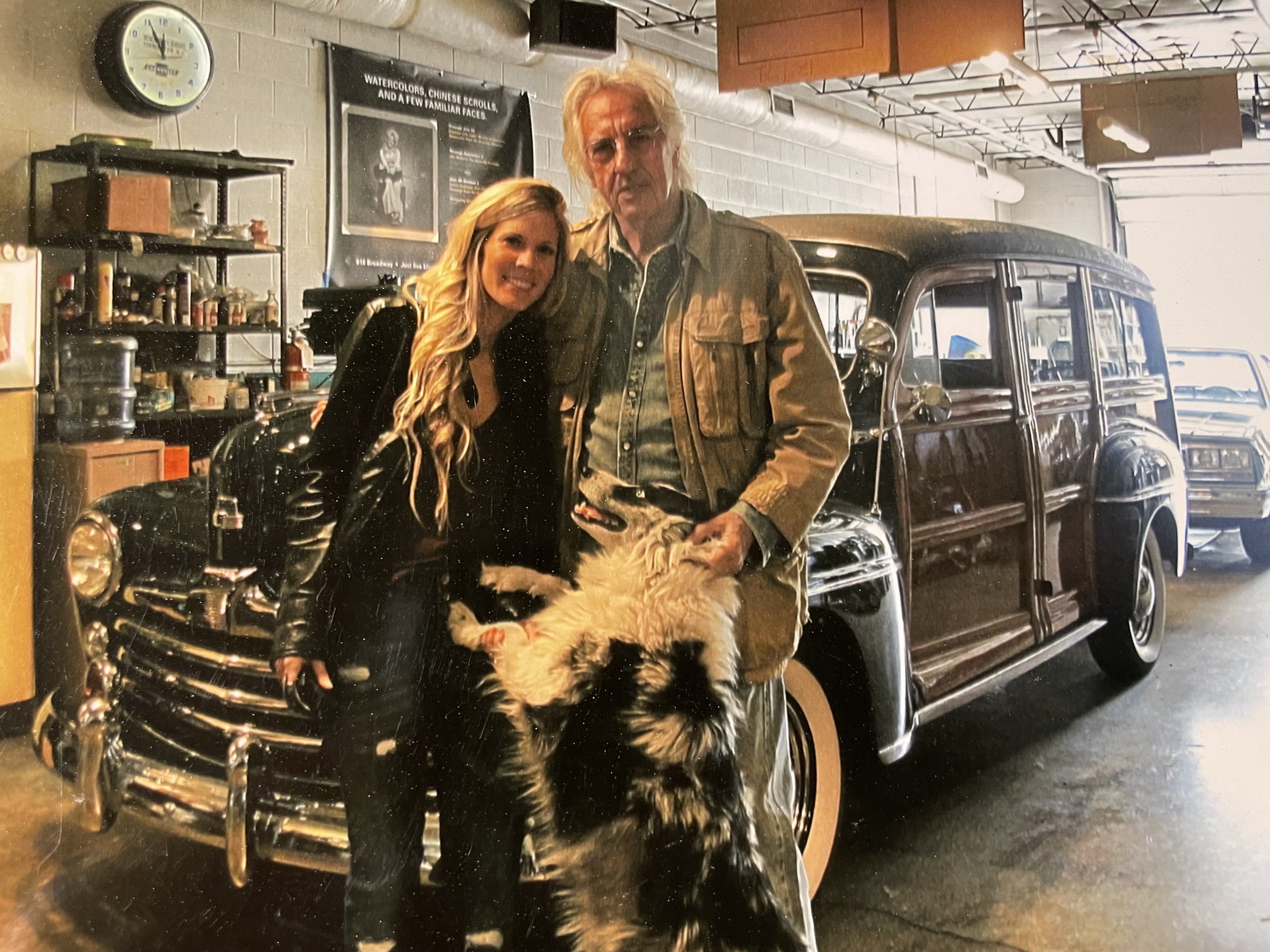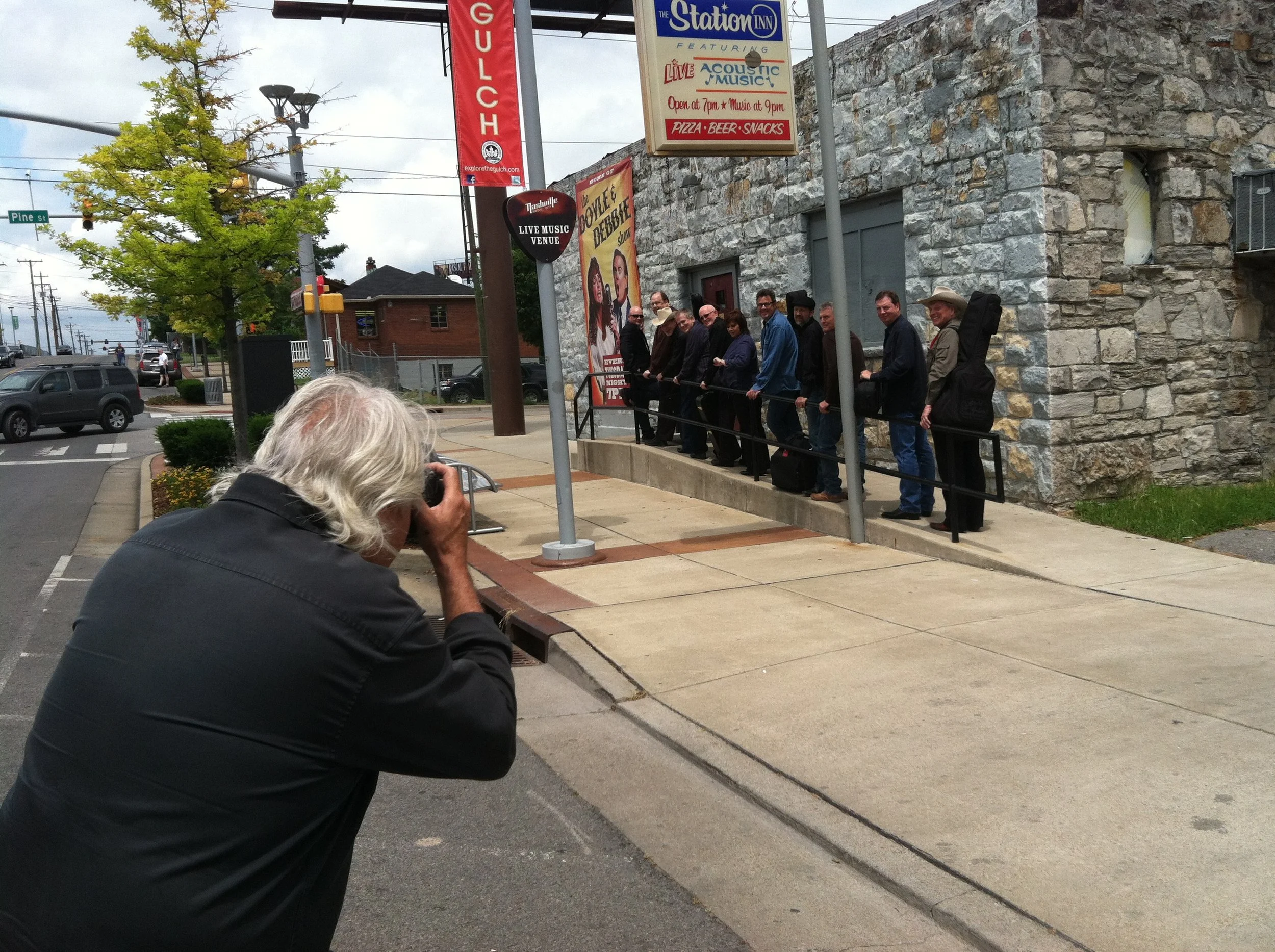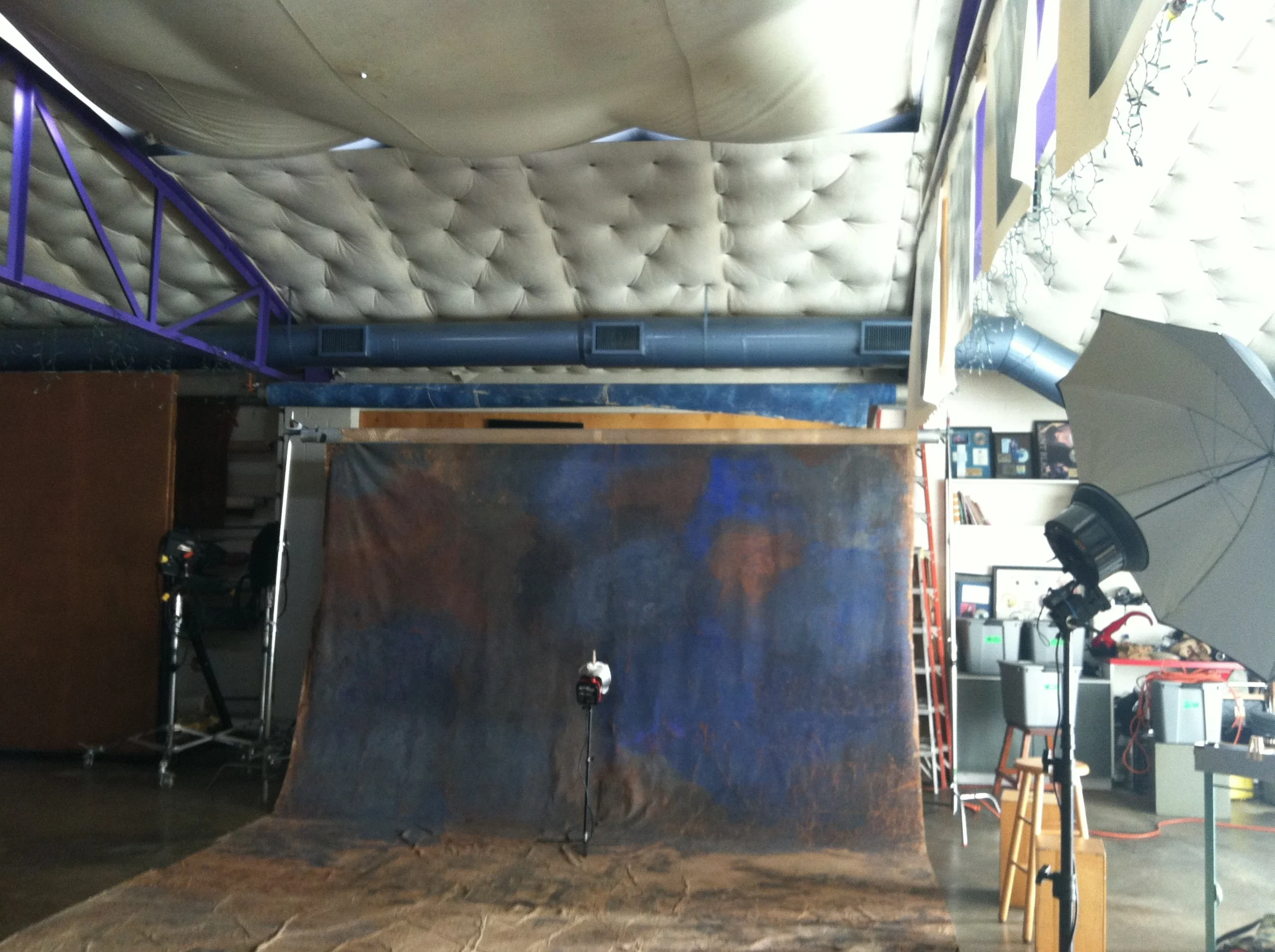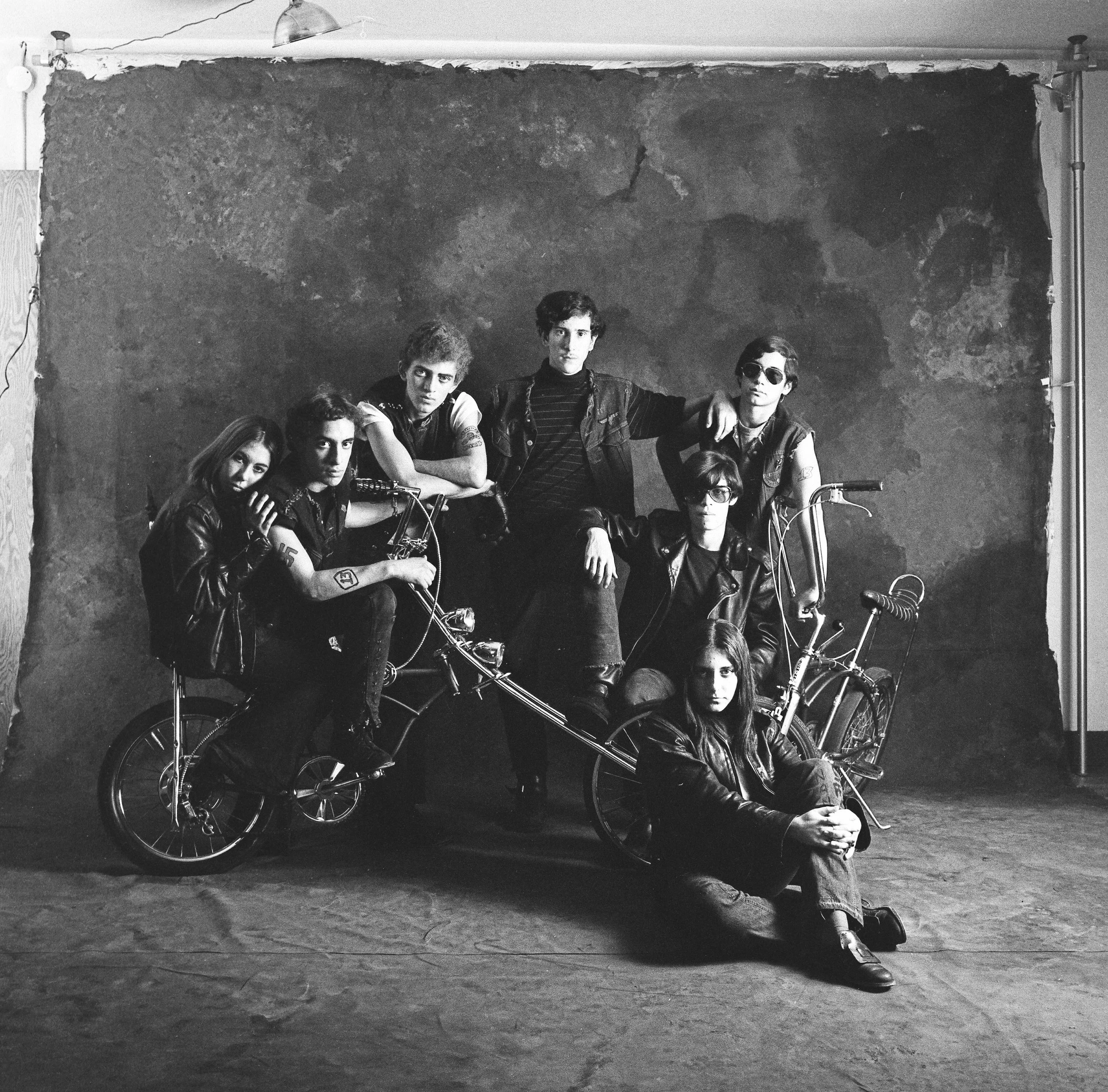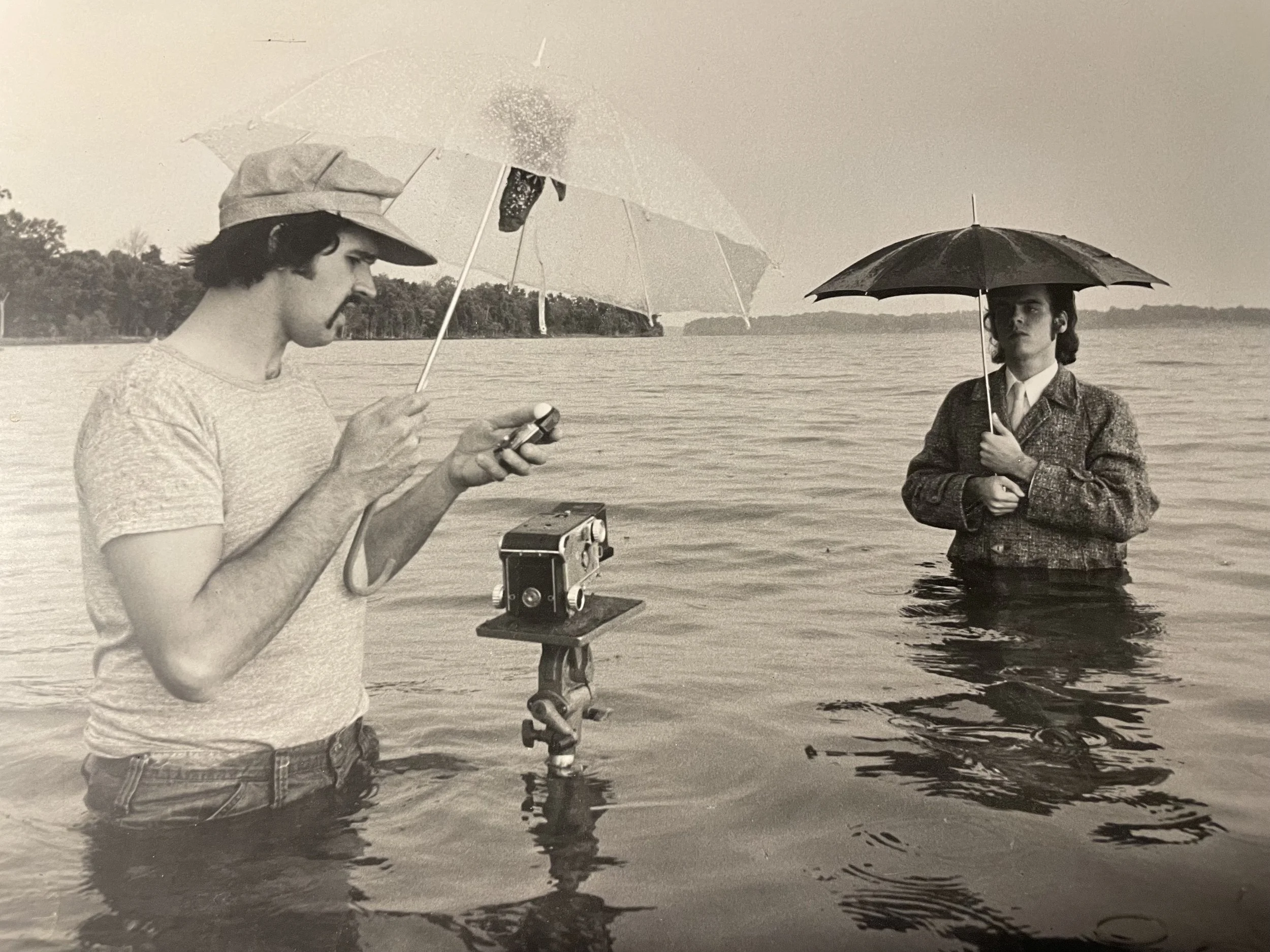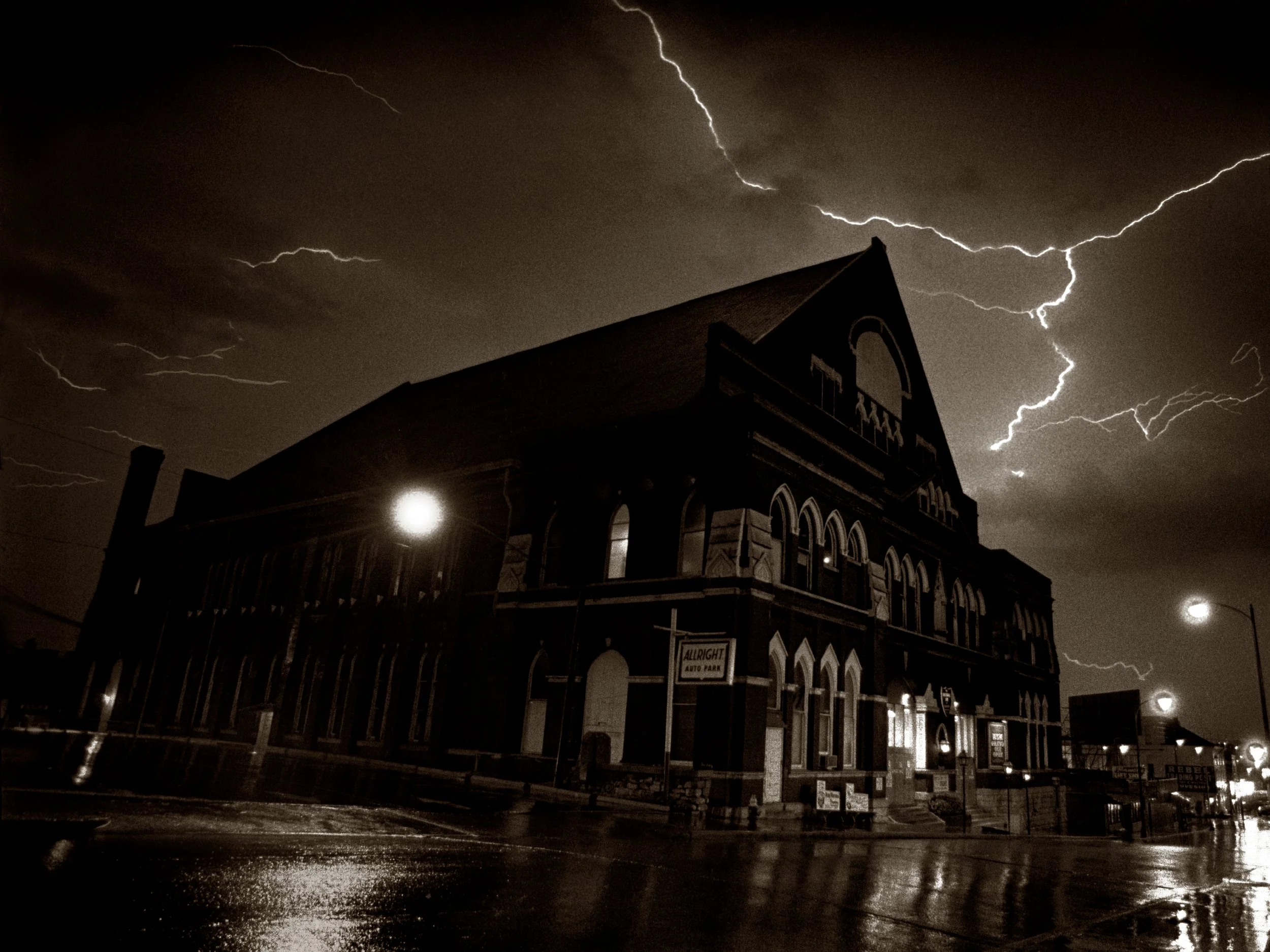About McGuire…..
As you're about to discover, I'm far more interesting with a camera and a glass of whiskey than I am with a typewriter and a glass of milk. But recently some friends insisted I write a little story about my life to lend some insight into this work I've been doing all these years. Obliged by their selfish, prodding, requests, I offer these words on "me". Please be aware that I never actually intended to become a photographer. I just figured I would do this until I found my true calling. So if I jump around a bit in my story telling and get you lost, please be patient. I promise in the end, my life will make as little sense to you as it has for me.
I was born May 17, 1941, the second oldest child of Felix and Elizabeth McGuire raised with four siblings, Dennis, Thomas, Kathleen and Jane. Together we formed one of the many dysfunctional Irish families living in New Jersey during the 1950's. You could say that my dad's weakness for Dixieland Jazz and brother Tom's enrollment in a high school photography class were the seeds that started it all. But they were just that…seeds…seeds that didn't start growing until that night in 1953 when I discovered country music.
I can't remember what I had for lunch yesterday, but I can still remember the smell of the room I was standing in where I first heard Hank Snow singing "Spanish Fireball." I was a twelve-year old boy scout delivering beer to my camp counselors when I first fell under the spell of his hypnotic guitar rhythms and that velvety voice coming out of that ratty loudspeaker that night in the counselor's lounge. And just as he wrote, "I played the part and gave my heart to that Spanish Fireball." My love of country music started that day and has never left. Music has always been a huge part of my life and a faithful muse for my photography, although I was hardly thinking about any careers at that age. I was too busy daydreaming about fast cars and counting the days until I could get a license to finally drive the hot rod I had been building after school for two years.
During my misspent teenage years, my fascination with cars kept me busy in our barn where I spent countless hours fooling with engines, transmissions and anything that could be taken apart and put back together. My dad was somewhat dismayed at the amount of time I spent covered in grease but was also pleased that I could fix stuff and keep the family '49 Ford 'woodie 'in tune. He warm-heartedly interpreted my mechanical skills to be a "sure indicator for success" and enrolled me in a mechanical engineering program at Trenton Junior College. It was a merciless two years and in 1961 when I finally finished, I was desperate for adventure and enlisted in the Air Force
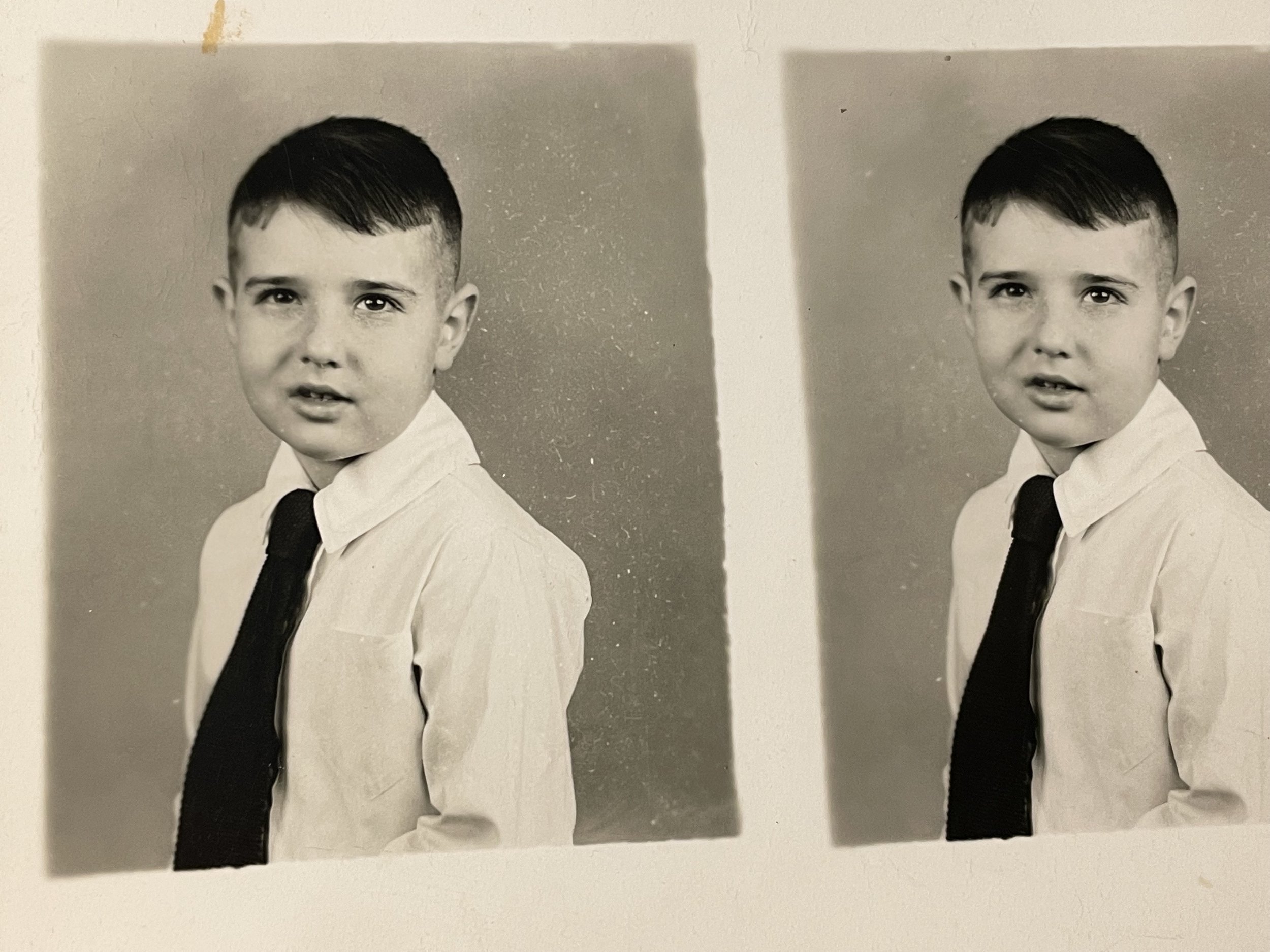
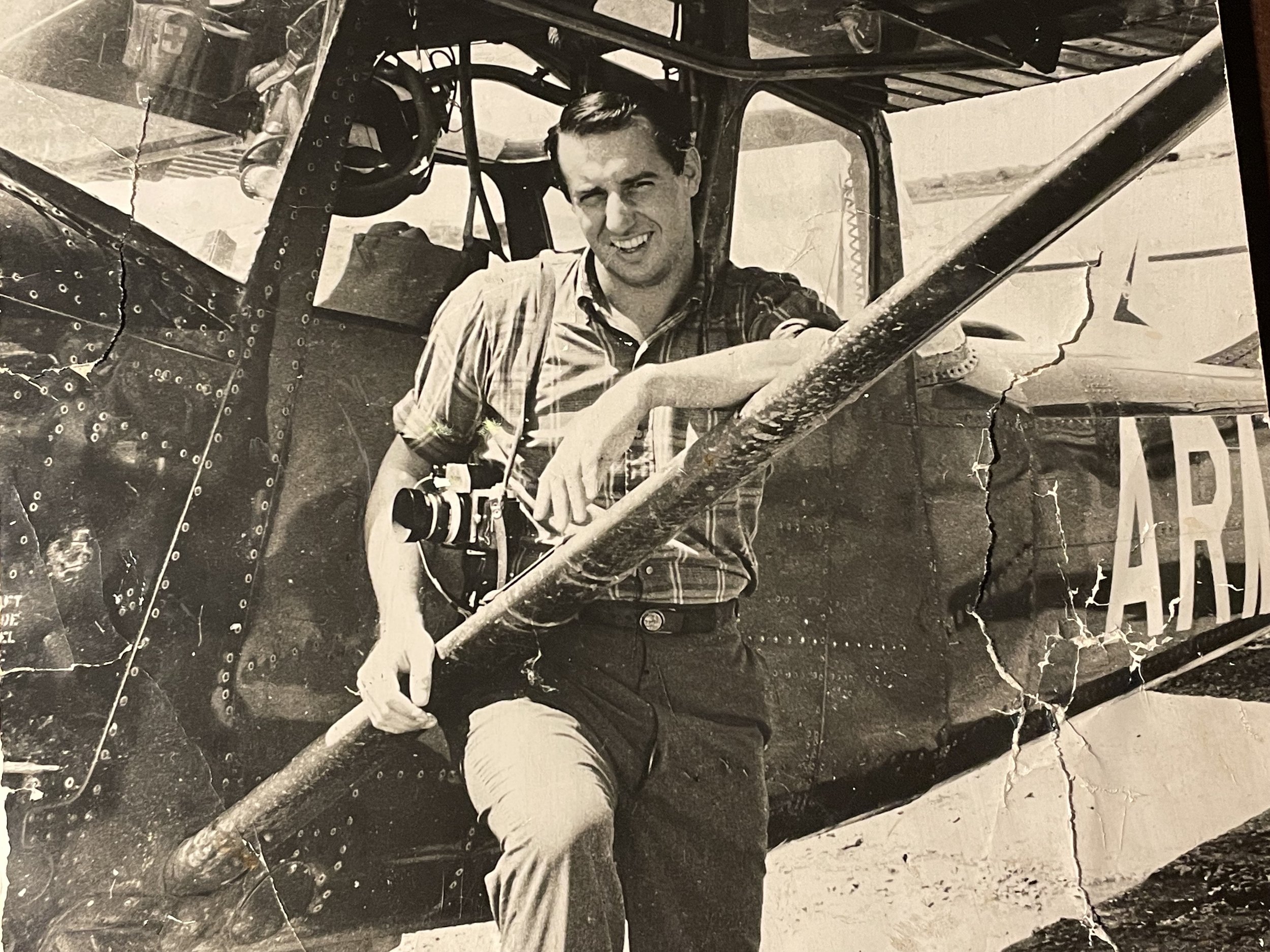
The Air Force trained me to be a weatherman but after a few years of chasing tornadoes I was given the choice to stay in Oklahoma another year of go to some far off place that I had never heard of. And being 23 and full of piss and vinegar, I volunteered to go to Vietnam to get out of Oklahoma City. One of the best choices of my life. Early on, my captain selfishly volunteered me to hang out of a single engine aircraft, and photograph Vietnamese villages as a rather primitive form of aerial reconnaissance. I enlisted the help of a wonderful, Vietnamese portrait photographer who showed me how to construct a makeshift darkroom in an old army tent, process film in muddy water and make bad black and white prints that were actually used by helicopter pilots to plan missions. Other than the "cheating death" aspect of hanging from the plane, the aerial photographs were relatively uninteresting. At least compared to the photographs I got to take of events surrounding the initial buildup of the first two hundred thousand U.S. troops in Vietnam from 1964 to 1965. Now that I was appointed the "official" camp photographer, I gladly gave up my cloud counting and was able to photograph my little view of the “Vietnam Conflict" that was about to get severely out of hand. It was at this time that I began drinking heavily. Much to my surprise, the Air Force awarded me an honorable discharge in 1965 and allowed me to keep all my film. It was actually a wonderful experience that I would not trade as it was the first time I felt myself being able to "see" things.
When I got back to the East coast, I was anxious to learn a trade and see what, if anything, I could do with my newfound hobby. It was the first time I realized that it just might be possible to take photographs and actually get paid for it. It was also painfully obvious that no matter how much fun it was to look through that lens, I had no real technical skills. So I did a stint at the "New York Institute of Photography" where I was schooled in all the basic technical skills. In fact, I became so highly trained and proficient that I was immediately able to land a job as assistant to New York fashion photographer John Foote for $65 a week. Although this was not a school, this is where my photographic education really began. I have fond memories of working with Mr. Foote. Many important lessons were learned at the foot of Mr. Foote...primarily, "always keep an empty film back for the first 2 or 3 rolls until your subject loosens up" but most significantly, he introduced me to the strongest photographic influence of my life, the work of Irving Penn.
“Forty eight years later I am still using the same hand-painted canvas backdrop for what has become “The Nashville Portraits.”
Seeing Penn's black & white portraits for the first time was like getting smacked in the head with a 2x4. The small trades series was the most honest and powerful visual thing I had ever seen...still is...transporting real, working people to stand in front of a timeless canvas in their "work clothes" and "tools" was such a simple and honest approach that opened up a whole new way of looking at people who worked with their hands. I was hooked! I was so taken by the power of those simple images that I had to try it myself. So I spent days hand painting a canvas that looked like Penn's backdrop and invited a local teenage bicycle gang who terrorized my neighborhood on 22nd Street and Third Avenue, to come in for a portrait. They were like the Hells Angels except a generation younger and rode "chopper" bicycles instead of Harleys. I copied Penn's famous portrait of the Hells Angles exactly...except with this teenage gang and sent him a B & W print explaining how his work had so influenced me. I still have the hand written note he sent saying how "amusing" the image was. Forty eight years later I am still using the same hand-painted canvas backdrop for what has become “The Nashville Portraits .“
In 1968, after three years as a darkroom slave for Mr. Foote, I needed a change and took a job as a corporate photographer for TWA Airlines at their corporate headquarters in New York on Third Avenue. I worked there for one year and promised myself when I left, that no matter what, I would never work for anyone again…and I never have! In the spring of 1969, I left TWA and began working for myself shooting mostly for Ziff Davis magazines like "Car and Driver" and "Cycle." I also began driving to Northern Virginia and the D.C. area on weekends to attend the many bluegrass festivals that were starting to spring up. I started photographing the bands on stage and eventually through my photography, got to know them and began shooting simple, bluegrass album covers. At the same time, many of these bands were beginning to come to New York and play clubs and small concerts. I began writing music revues of these shows for the Village Voice. This gave me great access to the clubs and the musicians and bands that I loved to hear and who I eventually wanted to photograph.
“I copied Penn's famous portrait of the Hells Angels exactly...except with this teenage gang and sent him a B & W print explaining how his work had so influenced me. I still have the hand written note he sent saying how "amusing" the image was.”
My next break came at Sam Hood's "Gaslight" club in Greenwich Village. One day I went to hang a few musician portraits in the lobby. Travis Rivers, manager and producer of Nashville blues singer Tracy Nelson came in to meet with the club owner. I was on a ladder hanging prints when he came through the lobby, and as I looked down, he nodded and walked downstairs. An hour later on his way out he paused and was looking at the prints and asked me "Who's the photographer?" I told him "Jim McGuire" and his response was flattering: "great work, where can I find him?" I came down off the ladder and introduced myself and he invited me to come to Tracy's show that night. We became and still remain great friends. Not long after that he invited me to visit him in Nashville and shoot some photographs of Tracy at her farm (my first Nashville album cover).
The next thing that was really profound for me was seeing John Hartford and the "Aereo-plain Band" play a club in the village. The band was John, Vassar Clements, Tut Taylor, and Norman Blake and it was the most thrilling music I had ever heard. It changed the direction of Bluegrass forever. And thanks to my new found friend, David Bromberg, I was able to get them all back to my little studio after a show one night to do some B&W portraits. The portraits of John and Vassar on my web site were shot that night and I can remember the first time printing those images thinking that maybe...just maybe, I could do this for a living. From then on I was hooked on shooting musicians and on a mission from God to move to Nashville.
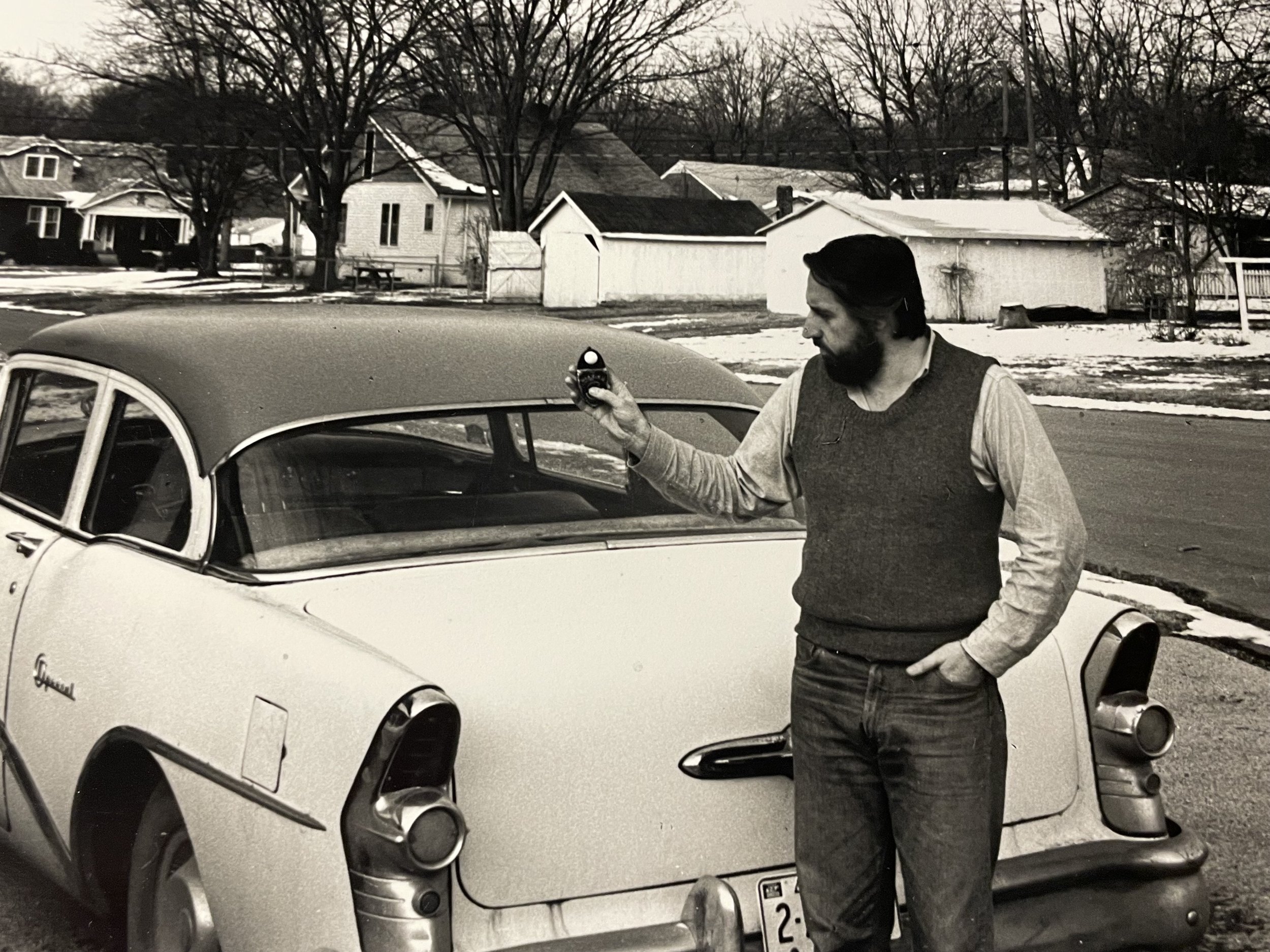
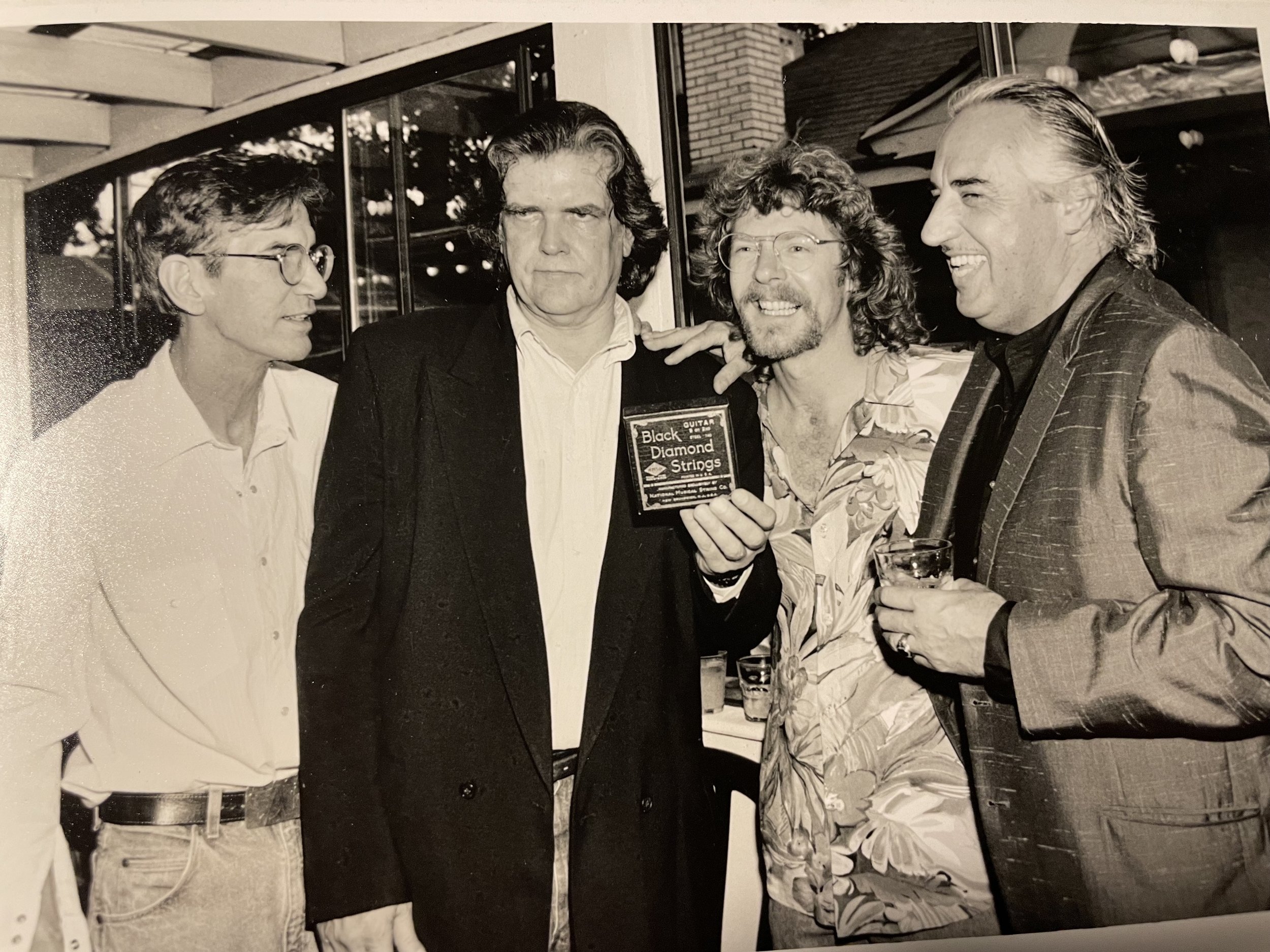
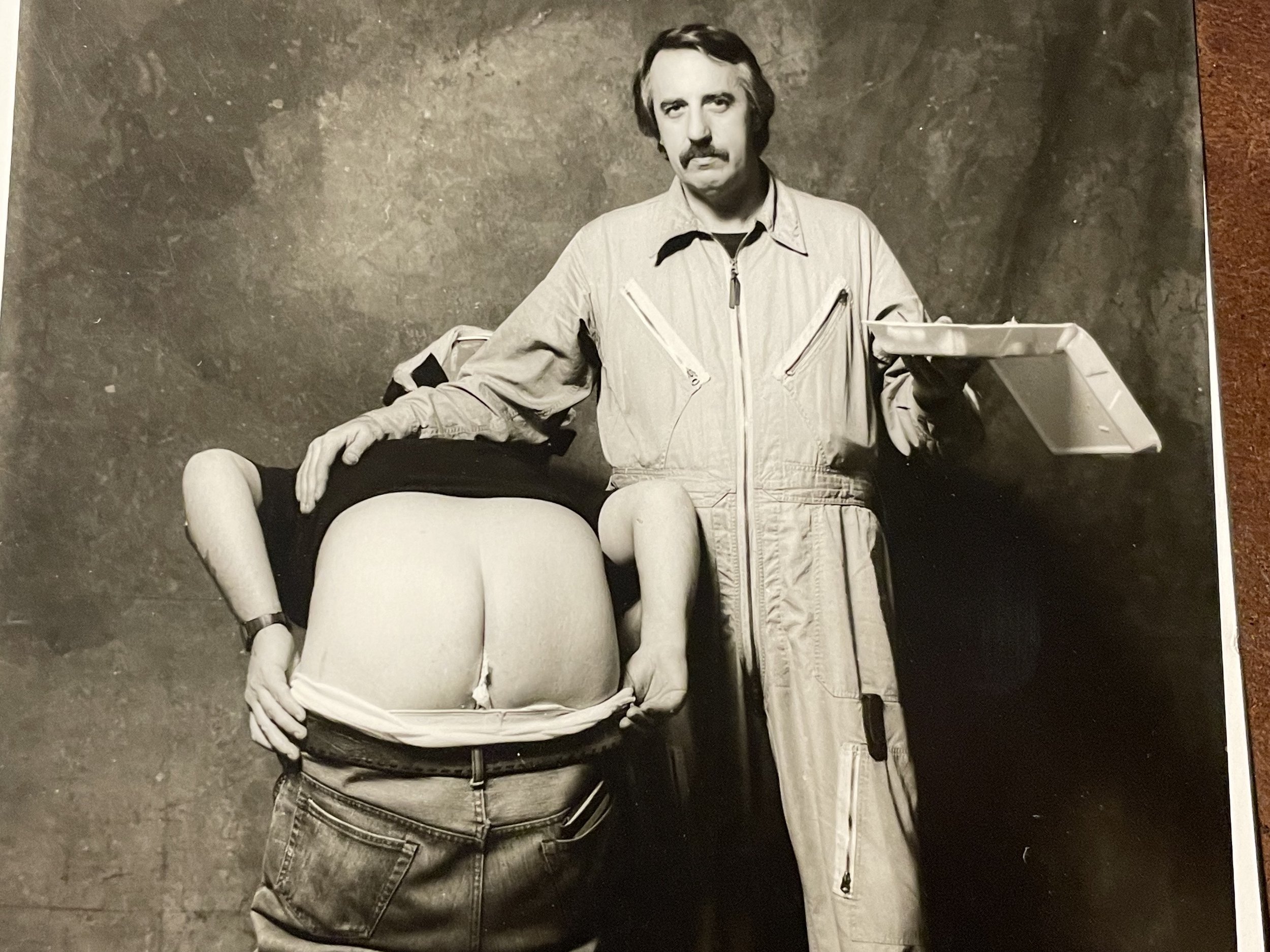
One of my favorite early location photos. My trusty assistant, R B Miller taking light reading... Percy Priest Lake, Nashville, 1975…shooting John Hiatt's first album cover “OverCoats”.
Nashville in the early 1970s was a great place to be, not only as a photographer but as a music lover...and Travis had an eye and an ear for talent. The first six months I was in town, I slept on the floor of Travis's upstairs office on 19th Avenue and can remember waking up many mornings to singers and songwriters who came to Travis for help getting into the music business...John Hiatt, Emmy Lou Harris, Rodney Crowell, Steve Young, Guy Clark, Townes Van Zandt, Steve Earle...they were all there trying to get a foot in the door just like me……it was the right place to be.
For many years, I lived in and worked out of a small, ancient, storefront on Wyoming Ave. I made a deal with my landlady who lived next door, to keep the place in repair in exchange for $125 a month rent. I spent countless hours on that roof but it was a wonderful, small, cozy room and spawned many late night drinkin' and pickin' sessions that resulted in many of the portraits in this series. I lived there on the cheap for thirteen wonderful years and as I began to shoot covers for the major labels, it was always fun to see big stars like Marty Robbins, Barbara Mandrell, Waylon Jennings and even Bill Monroe pull up in their Cadillacs to this funky, boarded up, store-front thinking, "surely this can't be the place!!!" I remember many times seeing them just sitting in their cars and having to go out and introduce myself and let them know this was the place...And some amazing friends and great music were made in that old storefront.
47 years and about 700 album covers later, Nashville and the world were becoming different places and I was feeling a change coming on. I spent 28 years in a live-in loft studio on 8th Avenue South in downtown and in 2018 the music and the music business had changed dramatically and I knew it was time to see what other adventures await…and decided to plan my escape. My music photography archive went to the Opry and I sold my studio just as downtown was becoming un-livable. What happened to this beautiful, sleepy little “Music City” that we all fell in love with ? When I look at this work as a whole, I could never have planned these last fifty years or these portraits...they just happened...and I still haven't quite figured out what I really want to do in life…..all I ever really wanted to do was be a jockey.
The inspiration for this image came to me in 1974 when there was serious talk about tearing down the Ryman. Every night time thunder storm, I would drag myself downtown to this deserted building trying to get this shot. This night I got lucky. I forgot to take my tripod along so this was actually taken with my camera resting on the open window sill of my 56 Buick. Nikon f….35mm Tri-X film….28mm lens…...three of the best seconds of my life.
